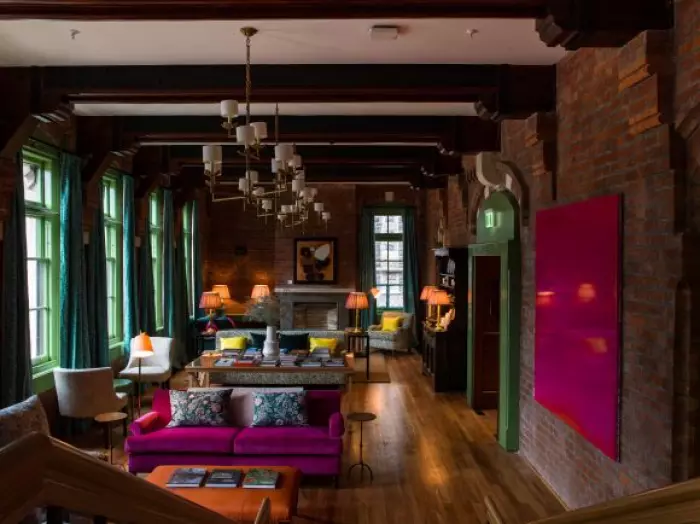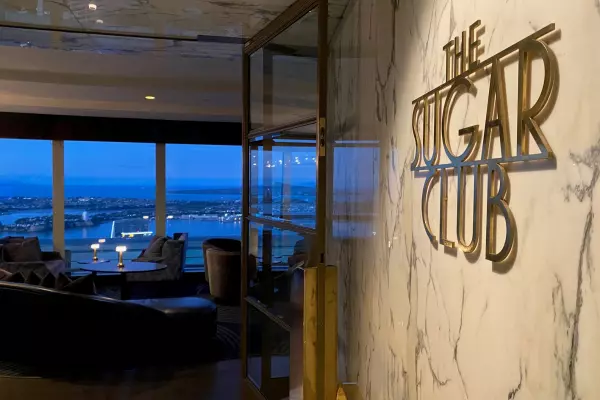The Observatory Hotel in Christchurch’s restored art centre, Te Matatiki Toi Ora, started out life 105 years ago as the physics, botany and zoology departments of Canterbury College, a precursor to the University of Canterbury.
The boutique, 33-room hotel, remodelled at a cost of $29 million over the past three years, also covers the ground floor of the observatory tower erected in 1895. That housed the Townsend Observatory, one of the country’s first optical viewing platforms.
All three gothic style structures were dealt a hammer blow by the city’s 2011 earthquakes and the tower itself collapsed.
Local contractor Leighs Construction started work on the hotel and tower in 2019, working intermittently through the pandemic, and the hotel eventually opened in May.
When BusinessDesk visited there were finishing touches still being made at the hotel entrance, with the completion of the whāriki, stone interpretations by Ngai Tūāhuriri artists of the woven welcome mats laid at the entrances to marae.
Today, guests are also free to climb the reassembled original staircase from the original tower, to check out the view from either the third-floor conservatory or the observatory itself, on request.
The hotel and the 350-person events space in the former Court Theatre building is managed by hotelier group Sarin Investments, a family-owned business that also manages the Hilton Doubletree in Wellington.
Standard king rooms start at $299, with rates for the bigger ‘malachite’ suite at $799 a night – and higher in season.
Observatory general manager Vicki Bretherton said pricing hasn’t deterred locals, who had an emotional attachment to the centre and the hotel.
And, within its own city centre ecosystem, the hotel has proven to be a major tourism drawcard in its own right – particularly among University of Canterbury alumni.
The rooms and common areas, including the tastefully cluttered drawing room, were designed by local interior designer Jessica Close, famous for her 'simpatico' treatment of what are otherwise visually unique rooms.
Curated
To reflect their individuality and link to the art world, the 10 premium rooms were named after colour pigments; verona, verdigris, rose madder, lapis, cadmium, cochineal, persian and cinnabar.
I stayed in the veridian room, the only room in what was the botany/zoology block, a part of the building that also houses the wonderful drawing room-dining area.
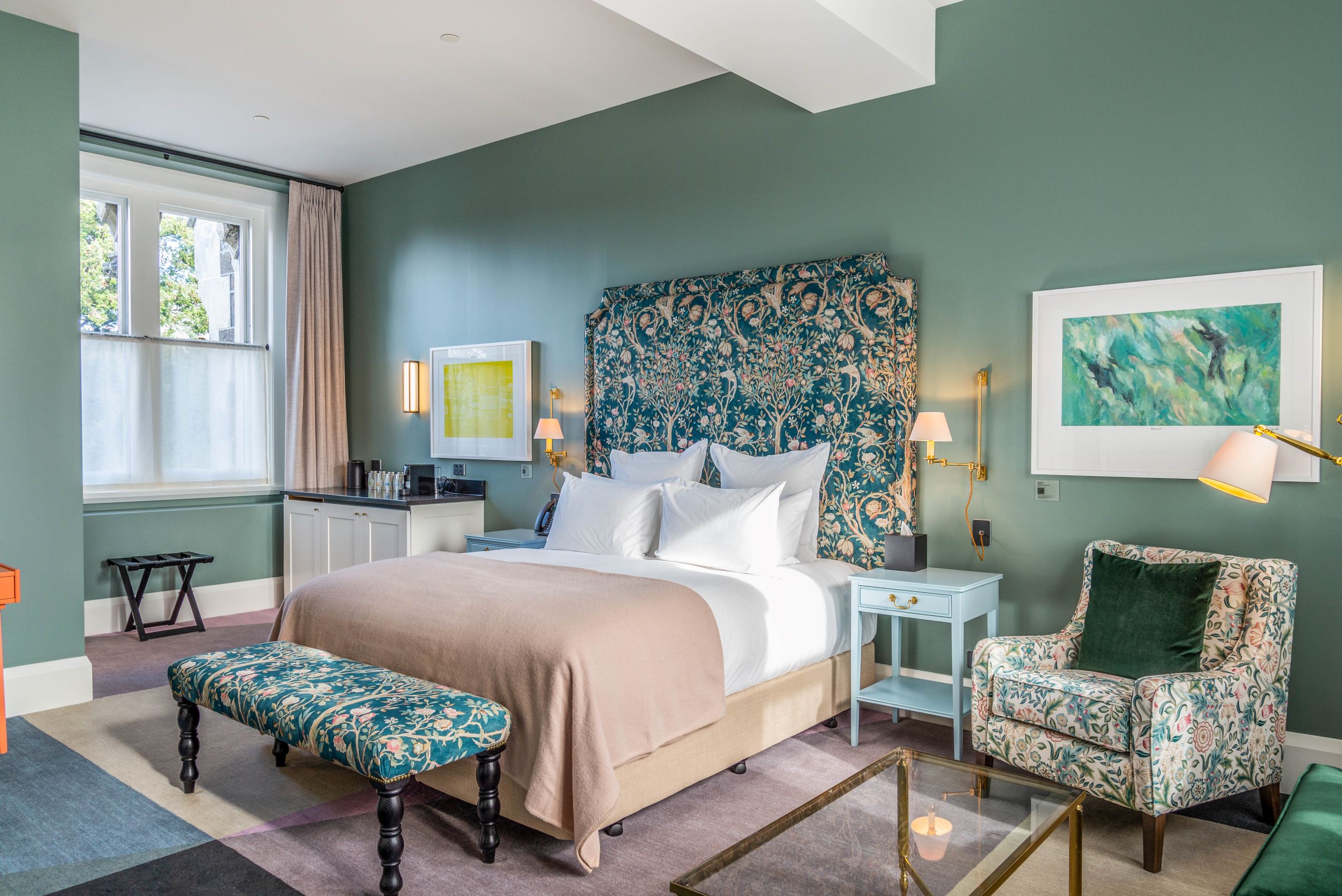 The Veridian is understated luxury. (The Observatory)
The Veridian is understated luxury. (The Observatory)And, as the name implies, the site represents a sprawling art gallery, with each piece curated by the Central Art Gallery. The drawing room features paintings by Leigh Martin and Dick Frizzell, while art that appears in the rooms has been curated by the Creators Room, featuring a host of young artists. I was smitten by Sophie Smith's 'Beneath'.
It is also entirely appropriate that the hotel is guarded by Antony Gormley’s sculpture, STAY, one of his two legacy public artworks commissioned by the city and installed during 2015 and 2016. Gormley’s other, more sociable twin, stands in the Ōtākaro Avon River.
The arts centre, made up of 23 buildings of 5,200 square metres, covers a two-hectare site straddling Hereford Street and Worcester Boulevard, bounded on the West by Rolleston Avenue and the Botanic Gardens.
First to be built, in the 1870s, was the clock tower on the north quad, the start of the Canterbury College. The next was the Great Hall, followed by the Boys' High School and Girls' High buildings, which were eventually subsumed into the university.
A host of attractions
Work started on the art centre's refurbishment in 2012, and to date six galleries and museums, including Rutherford’s Den and the Central Art Gallery, as well as the Canterbury Academy of Dance and Lumière Cinemas have reopened to the public.
There are also 10 retail tenants on site, alongside seven food outlets – so it's a significant drawcard for the inner city.
Philip Aldridge, chief executive of the arts centre, said the primary reason for repurposing the buildings was to help provide stable income to its landlord, the Arts Centre Te Matatiki Toi Ora, which operates as a charitable trust.
Aldridge, a British-born actor and former head of Christchurch’s Court Theatre, said by the end of this year, 20 of the site's 23 structures would be completed, with the rebuild covered by an insurance payout of $168m.
That, unfortunately, is about $120m short of the overall expected cost, he said, “so, we’ve done quite well to get to this point”.
Another $5.5m recently granted by the Christchurch City Council will allow the main engineering and electrical engineering buildings to be finished. The electrical engineering building will be used as a health technology centre.
Aldridge said the trust had used a series of contractors over the past decade, but it had directly employed its own masons, given the amount of stonework required on site.
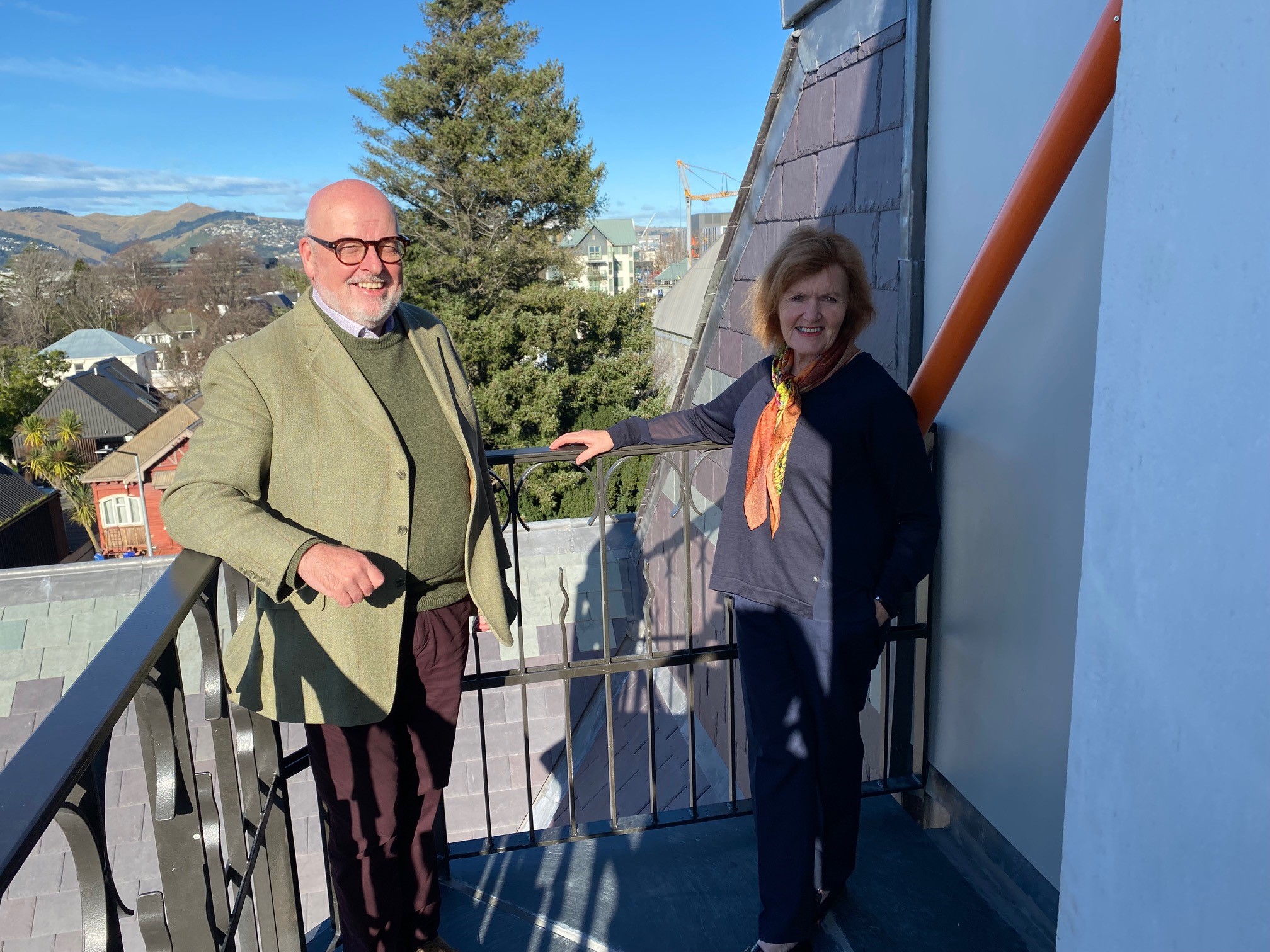 Aldridge and Bretherton say they're out to attract locals. (BusinessDesk) Initially, he said, they brought in foreign workers, given the difficulty in sourcing that skill locally. And because Welsh slate had been used for the roofing, he said, the centre could lay claim to being the largest client of Welsh slate in the world over the past decade.
Aldridge and Bretherton say they're out to attract locals. (BusinessDesk) Initially, he said, they brought in foreign workers, given the difficulty in sourcing that skill locally. And because Welsh slate had been used for the roofing, he said, the centre could lay claim to being the largest client of Welsh slate in the world over the past decade.The Cellar Door
Bretherton and her staff serve a lovely continental style breakfast in the main drawing room, they defer to the excellent Cellar Door for lunch and dinner, a few steps away in the centre’s south quad.
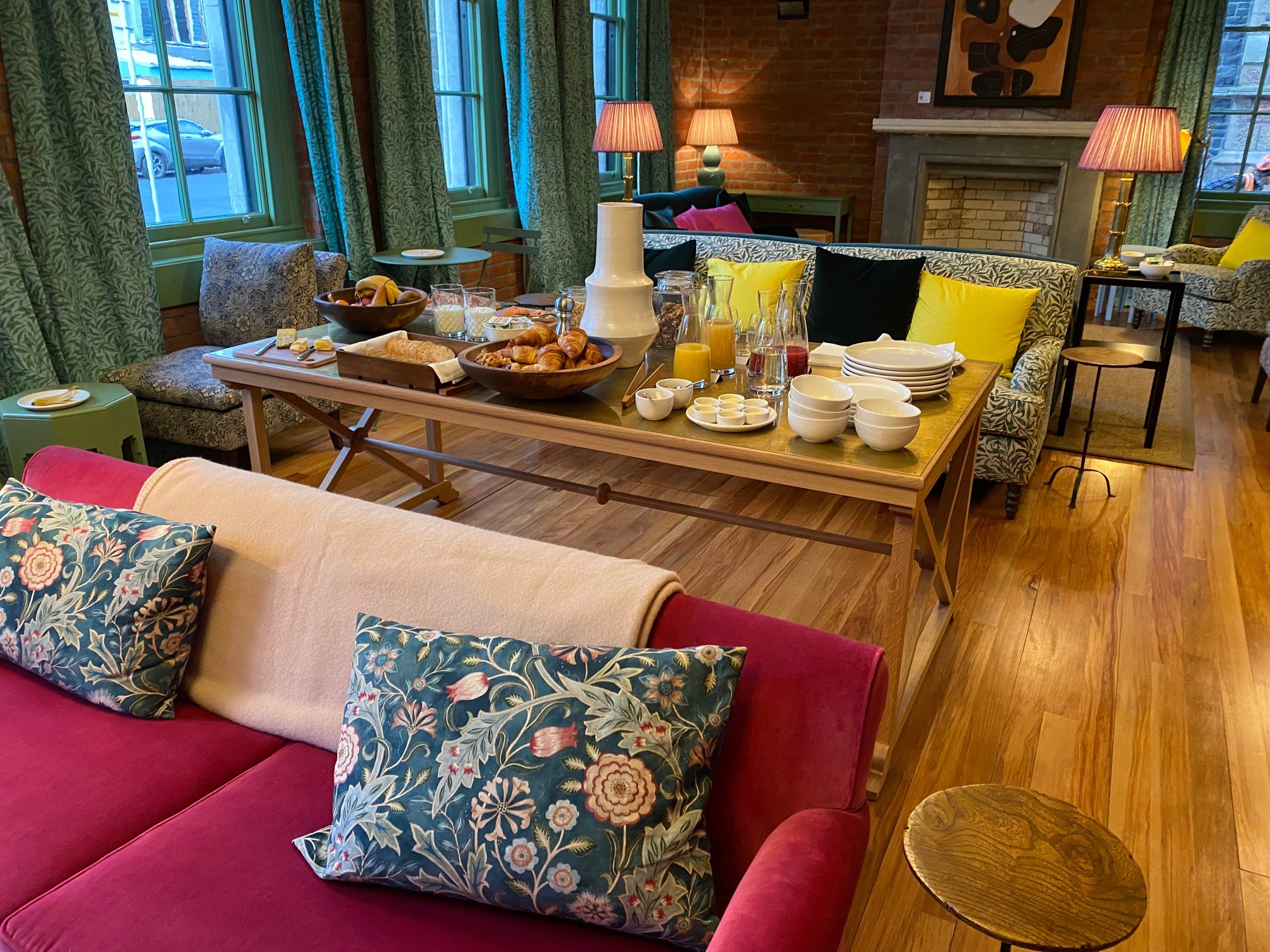 Breakfast in the drawing room (BusinessDesk)
Breakfast in the drawing room (BusinessDesk)The restaurant, founded by partners Tim Ogle and Kate Hide in early 2020, resides in what was the university's school of art for 60 years and more latterly, Annie's Wine Bar for 21 years leading up to the 2010 earthquakes.
The two have built a quick reputation on the back of wine ‘tasting flights’, a four glass marriage of same-varietal wines that include a background on the wine, its region and some flavour notes and its 'wine-friendly' locally sourced food.
Ogle is the first to admit the timing for launching a new business was awful, as the site was only operating for a matter of weeks before pandemic trading restrictions kicked in.
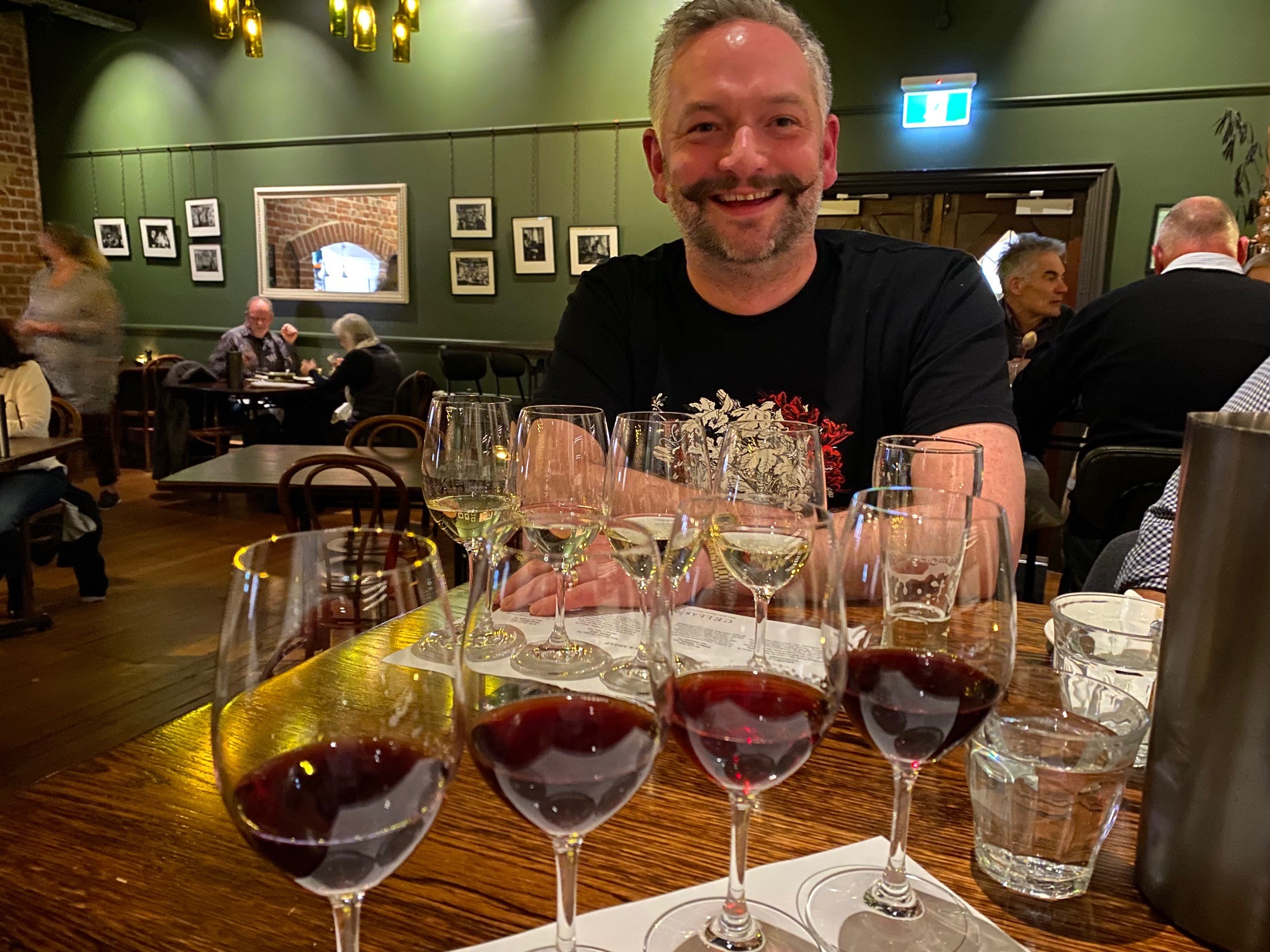 Ogle: timing was awful but trade is coming back.
Ogle: timing was awful but trade is coming back.But, with the market reopening and people heading out again, the restaurant/wine tasting restaurant is perking up, he said, although securing enough staff remains his biggest headache.
Sourcing seasonal offerings from local farms is slightly easier, he said. His current winter seasonal offerings include Brussels sprouts, made with a whipped goat cheese and winter verde, salmon gravlax, served with beetroot chutney and pickled onions and slow-cooked beef cheek, sourced direct from a farm near Cheviot, North Canterbury.
But it was the starters that hooked me, particularly the white anchovies on toast and Jerusalem artichoke hummus, which comes with zhoug and seed wafer, setting the tone perfectly for what was to come in the form of a pinot noir flight and the beef cheek.
Ogle, a former wine marketer, said while they rotate the menu, they’d been forced to keep the anchovy dish “into perpetuity”.
“We tried to take it off. But we had a revolt on our hands from the regulars, so it’s here."
And let’s not even talk about the crème brulée, the apricot and campari trifle or dark chocolate cremeux.
Art forms of their own.
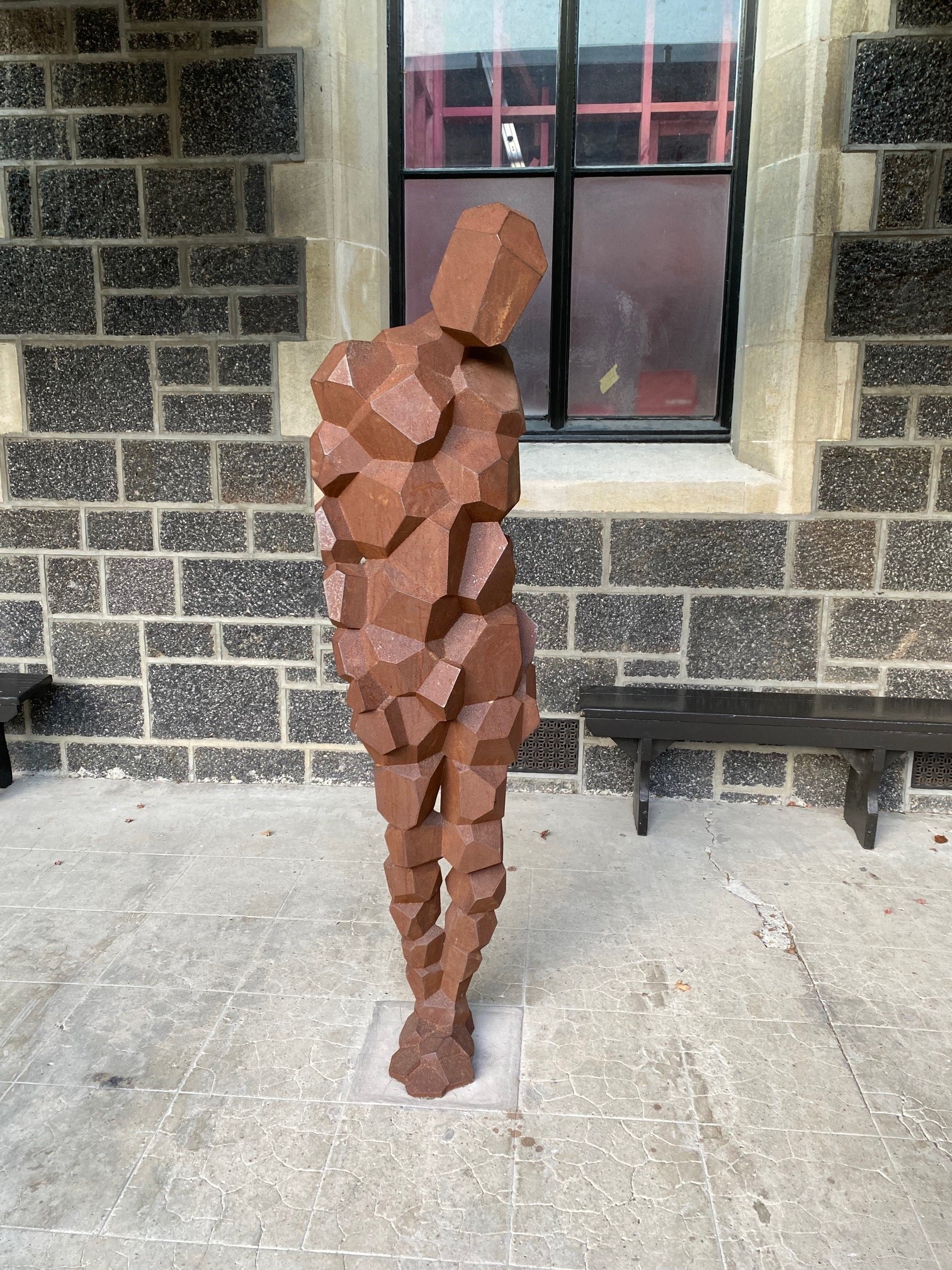 'STAY' 2015/2016
'STAY' 2015/2016


